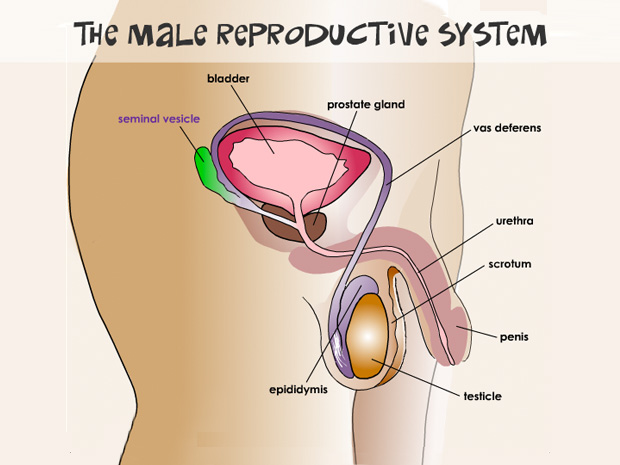Formation of Sperm: The Journey Begins in the Testes
Before we explore where sperm comes from, let's delve into the process of sperm formation. The testes, located in the scrotum, are responsible for producing sperm through a complex process called spermatogenesis.

During spermatogenesis, specialized cells within the testes, known as spermatogonia, undergo a series of divisions and differentiations. This process eventually gives rise to mature sperm cells or spermatozoa.
The Spermatogenesis Process
Spermatogenesis can be divided into three distinct phases:
1. The Proliferation Phase:
During this initial phase, spermatogonia multiply through a process called mitosis. Some of these cells remain as spermatogonia, ensuring a continuous supply, while others progress to the next stage.
2. The Meiosis Phase:
In this phase, spermatogonia transform into primary spermatocytes and undergo meiosis, a specialized type of cell division. During meiosis, the primary spermatocytes divide twice to produce four haploid cells called spermatids.
3. The Maturation Phase:
During this final phase, spermatids undergo structural and functional changes to become mature spermatozoa. This transformation involves the development of a head, midpiece, and tail, which equip the sperm with the necessary tools for fertilization.
The Path from Testes to Ejaculation: Ejaculatory Ducts and Urethra
Now that we understand the formation of sperm, let's address where sperm goes after its production in the testes.
After maturation, the spermatozoa leave the testes and enter a network of coiled tubes, known as the epididymis, where they undergo further maturation and are stored until ejaculation. From the epididymis, the sperm travel via the vas deferens into the ejaculatory ducts.
The ejaculatory ducts are responsible for propelling sperm forward by contracting their smooth muscles. These ducts join the urethra, a tube that carries urine from the bladder during urination. During ejaculation, sperm mix with seminal fluid produced by the seminal vesicles and prostate gland, forming semen. Semen is then expelled through the penis.
Final Thoughts
Sperm, the male reproductive cells essential for fertilization, undergo a remarkable journey from their formation in the testes to ejaculation. Understanding the complex process of spermatogenesis and the male reproductive system helps shed light on the origins of sperm.
Knowing where sperm comes from not only contributes to our knowledge of human reproduction but also plays a crucial role in addressing fertility issues and advancing the field of assisted reproductive technologies.
So, the next time you ponder the origins of sperm, remember the intricate journey these tiny cells embark upon to fulfill their important role in the creation of life.
Related FAQs about where does sperm come from
What is the process of sperm formation?
Sperm formation, known as spermatogenesis, occurs in the testes. It involves the division and differentiation of spermatogonia, resulting in the production of mature sperm cells or spermatozoa.
What are the three phases of spermatogenesis?
The three phases of spermatogenesis are the proliferation phase, meiosis phase, and maturation phase. Proliferation involves the multiplication of spermatogonia, meiosis includes the division of primary spermatocytes into spermatids, and maturation leads to the development of mature spermatozoa.
Where do sperm go after being produced in the testes?
After production in the testes, sperm enter the epididymis, where they undergo further maturation and are stored until ejaculation. From the epididymis, sperm travel through the vas deferens and ejaculatory ducts before being expelled through the penis.
What is semen, and how is it formed?
Semen is a mixture of spermatozoa and seminal fluid. Seminal fluid is produced by the seminal vesicles and prostate gland. During ejaculation, sperm mixes with seminal fluid, forming semen. The purpose of seminal fluid is to provide nourishment, protection, and a suitable environment for sperm survival and motility.
Why is it important to understand where sperm comes from?
Understanding where sperm comes from is crucial for comprehending human reproduction, addressing fertility issues, and advancing assisted reproductive technologies. Knowledge of the male reproductive system and sperm formation helps in diagnosing and treating infertility, enabling couples to achieve their desired pregnancies.
Glossary about where does sperm come from
1. Testes: The testes, also known as testicles, are the male reproductive glands located in the scrotum. They are responsible for producing sperm and testosterone.
2. Spermatogenesis: Spermatogenesis is the process of sperm cell development within the seminiferous tubules of the testes.
3. Spermatogonia: Spermatogonia are the primitive germ cells that give rise to sperm cells through mitosis and differentiate into spermatocytes.
4. Mitosis: Mitosis is a type of cell division that results in two identical daughter cells, each having the same number of chromosomes as the parent cell.
5. Meiosis: Meiosis is a type of cell division that produces haploid cells, such as sperm cells, with half the number of chromosomes as the parent cell.
6. Epididymis: The epididymis is a coiled tube that sits on the back of each testicle. It serves as a storage and maturation site for sperm before they are ejaculated.
7. Vas Deferens: The vas deferens is a long, muscular tube that carries mature sperm from the epididymis to the ejaculatory ducts during ejaculation.
8. Ejaculatory Ducts: The ejaculatory ducts are short tubes formed by the joining of the vas deferens and the seminal vesicles. They propel sperm into the urethra.
9. Urethra: The urethra is a tube that carries urine from the bladder and semen from ejaculatory ducts out of the body through the penis.
10. Seminal Vesicles: The seminal vesicles are a pair of glands that produce a significant portion of the fluid that makes up semen. They contribute nutrients and enzymes that support the survival and motility of sperm.
